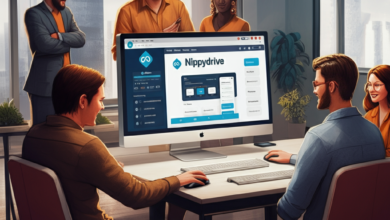Tns salesforce best practices audit v1.2.0

TNS Salesforce Best Practices Audit v1.2.0: Comprehensive Guidelines for Optimizing Your Salesforce Implementation
Salesforce is one of the most powerful and widely used CRM platforms globally, offering unparalleled tools to manage customer relationships, streamline business processes, and boost productivity. However, to truly leverage the full potential of Salesforce, implementing best practices is critical. The TNS Salesforce Best Practices Audit v1.2.0 is a comprehensive framework designed to help organizations optimize their Salesforce implementation, identify inefficiencies, and maintain a high-performing system.
This article explores the key components of the TNS Salesforce Best Practices Audit v1.2.0, offering actionable insights into how to maximize your Salesforce setup for scalability, security, and user adoption.
1. Introduction to TNS Salesforce Best Practices Audit
The TNS Salesforce Best Practices Audit provides organizations with a structured approach to evaluate and improve their Salesforce configurations. Version 1.2.0 introduces several updates and enhancements, focusing on performance optimization, security compliance, and improved usability.
Whether you’re a small business or a large enterprise, regular Salesforce audits can help prevent issues like data corruption, system inefficiencies, and poor user adoption.
2. Why Conduct a Salesforce Audit?
A Salesforce audit ensures that your system is aligned with business objectives and operating at peak efficiency. Benefits include:
- Improved system performance
- Enhanced security and compliance
- Increased user satisfaction and adoption
- Identification and resolution of configuration errors
3. Key Features of Version 1.2.0
The v1.2.0 update introduces the following enhancements:
- Advanced Data Quality Checks: More robust tools for identifying and resolving duplicate and outdated records.
- Enhanced Security Review Modules: Updated guidelines to align with the latest security standards.
- Customizable Audit Templates: Tailored templates for businesses of all sizes.
- Detailed Reporting: Comprehensive reports that highlight areas of improvement.
4. Best Practices for Salesforce Data Management
a. Data Hygiene
- Regularly cleanse your data by removing outdated or inaccurate information.
- Use Salesforce tools like Data Loader and Einstein Data Detect to maintain high data quality.
b. Duplicate Management
- Leverage Salesforce Duplicate Management rules to identify and merge duplicate records.
c. Data Archiving and Backup
- Archive historical data that is no longer needed for daily operations.
- Use Salesforce Backup and Restore features to protect against accidental data loss.
5. Security Best Practices
a. Role Hierarchies
- Define clear and logical role hierarchies to ensure proper data visibility and access controls.
b. Permission Sets and Profiles
- Use Permission Sets for temporary access and Profiles for long-term role definitions.
- Regularly review and update user access permissions.
c. Login and Access Policies
- Implement two-factor authentication (2FA) and IP restrictions to enhance login security.
6. User Adoption Strategies
a. User Training
- Conduct regular training sessions to keep users updated on system changes and new features.
b. Customization for Usability
- Use Salesforce’s drag-and-drop tools to create intuitive interfaces and workflows tailored to your users’ needs.
c. Tracking User Engagement
- Monitor user activity using Salesforce dashboards to identify areas where additional support is needed.
7. Performance Optimization
a. Lightning Experience Configuration
- Optimize page layouts and Lightning components to ensure fast load times and seamless navigation.
b. Custom Code and Apex Best Practices
- Use Apex triggers sparingly and follow governor limits to maintain system stability.
c. Reducing Technical Debt
- Regularly review customizations to retire unused components and streamline configurations.
8. Audit Checklist for Administrators
- Review and update role hierarchies.
- Validate and archive outdated data.
- Configure login access policies.
- Optimize Lightning pages and workflows.
- Conduct user feedback sessions and implement improvements.
9. Future Trends in Salesforce Optimization
Looking ahead, organizations should prepare for advancements in AI-powered Salesforce tools, enhanced automation capabilities, and stricter compliance requirements. Staying proactive with regular audits ensures that your system remains future-proof.
10. Conclusion
The TNS Salesforce Best Practices Audit v1.2.0 is a vital tool for any organization looking to maximize the efficiency, security, and usability of their Salesforce instance. By following the outlined best practices, businesses can achieve a streamlined, high-performing CRM system that meets their evolving needs.
Start your Salesforce audit today and unlock the full potential of your CRM investment!



